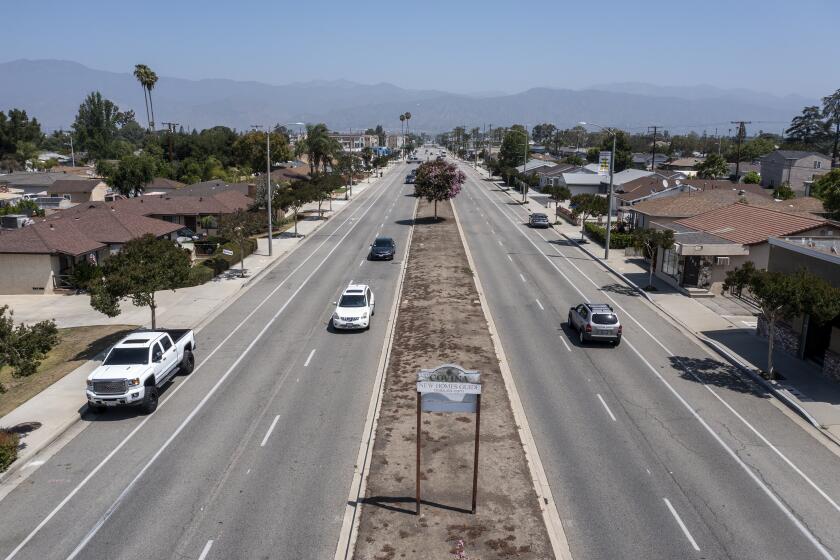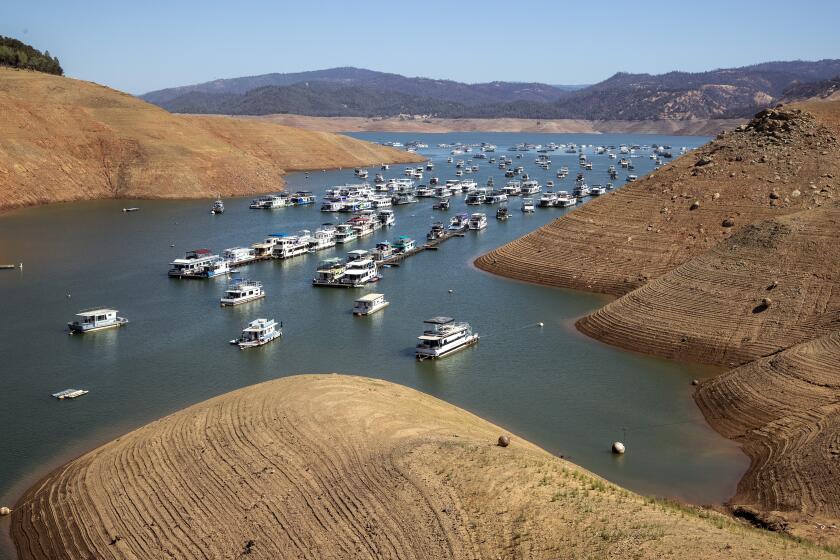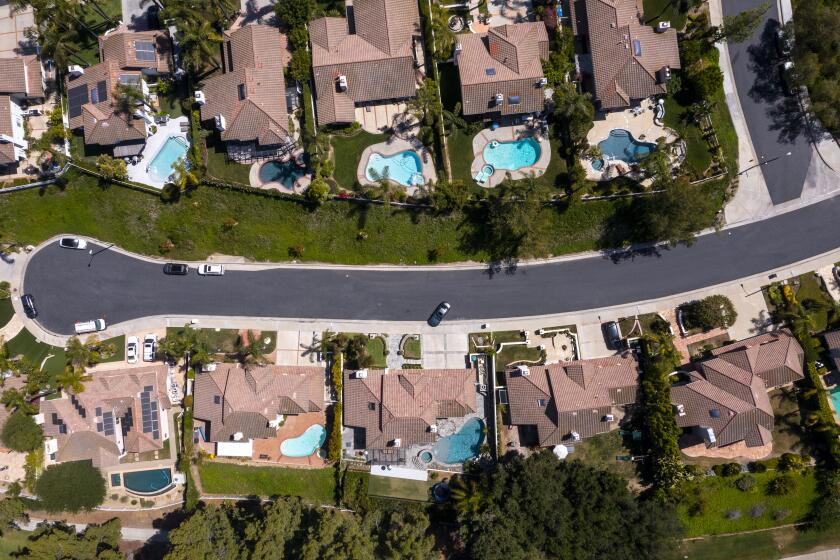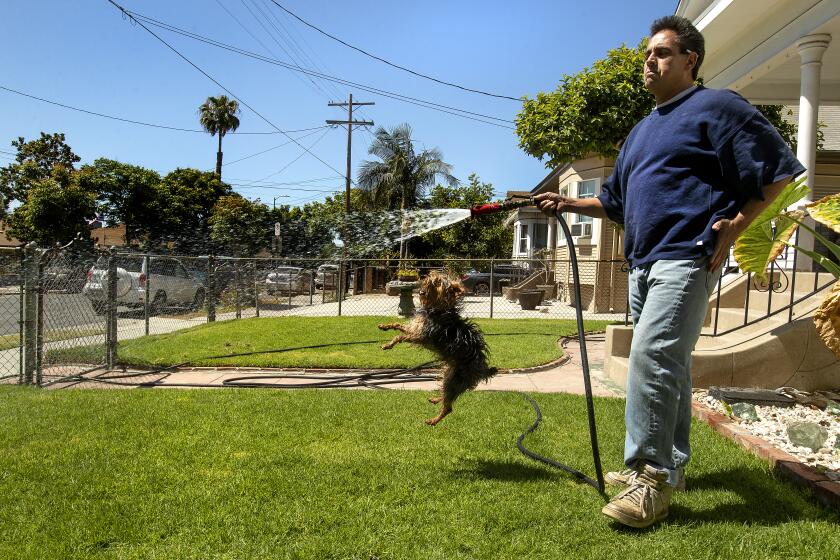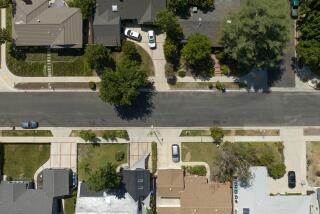Defiance, acceptance and cries of ‘bull—’ as sweeping L.A. water restrictions begin
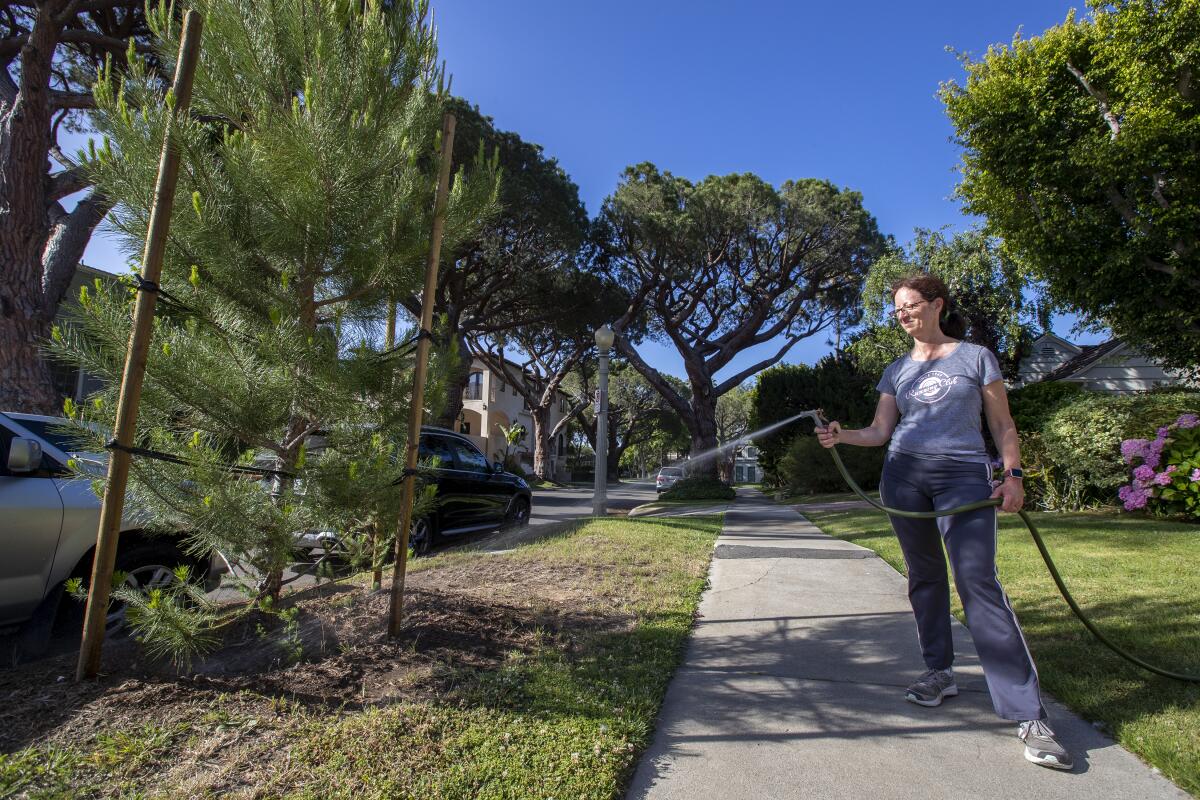
Millions of Angelenos awoke Wednesday to a new, more arid future as unprecedented water restrictions went into effect across Southern California.
For some, the sweeping limitations on outdoor watering felt like déjà vu from the last time the state was in a significant drought, when lawns turned brown and short showers became the norm. For others, the rules were a frustrating reminder of how little has changed.
“Here we go again,” said Rose Campos, who has lived in El Sereno for 18 years.
On Wednesday, Campos was helping a crew install drought tolerant landscaping in her daughter’s front yard. The house next door, where Campos and her husband live, still displays a large expanse of grass, already yellowing under the hot sun.
The grass used to be “the pride of the block,” she said, but it will soon be transitioned as well.
Campos is now one of more than 4 million residents in the city of L.A. who are subject to the new rules from the Department of Water and Power that limit outdoor watering to two days a week in a herculean effort to conserve water in a third year of drought.
More than 6 million Southern Californians will be placed under new drought rules today in an unprecedented effort to conserve water.
Earlier this year, California water officials said they could only allocate 5% of requested supplies from the State Water Project after the driest-ever January, February and March left meager snowpack and reservoirs near record lows.
Despite the deficits, the region’s residents responded by using about 27% more water in March compared to the same month in 2020, the year the current drought began.
“We must do more. Our situation is critical,” said Adel Hagekhalil, general manager of the Metropolitan Water District of Southern California, which provides water to the DWP.
But as the sun rose on Wednesday, some residents were less than enthusiastic about the new restrictions.
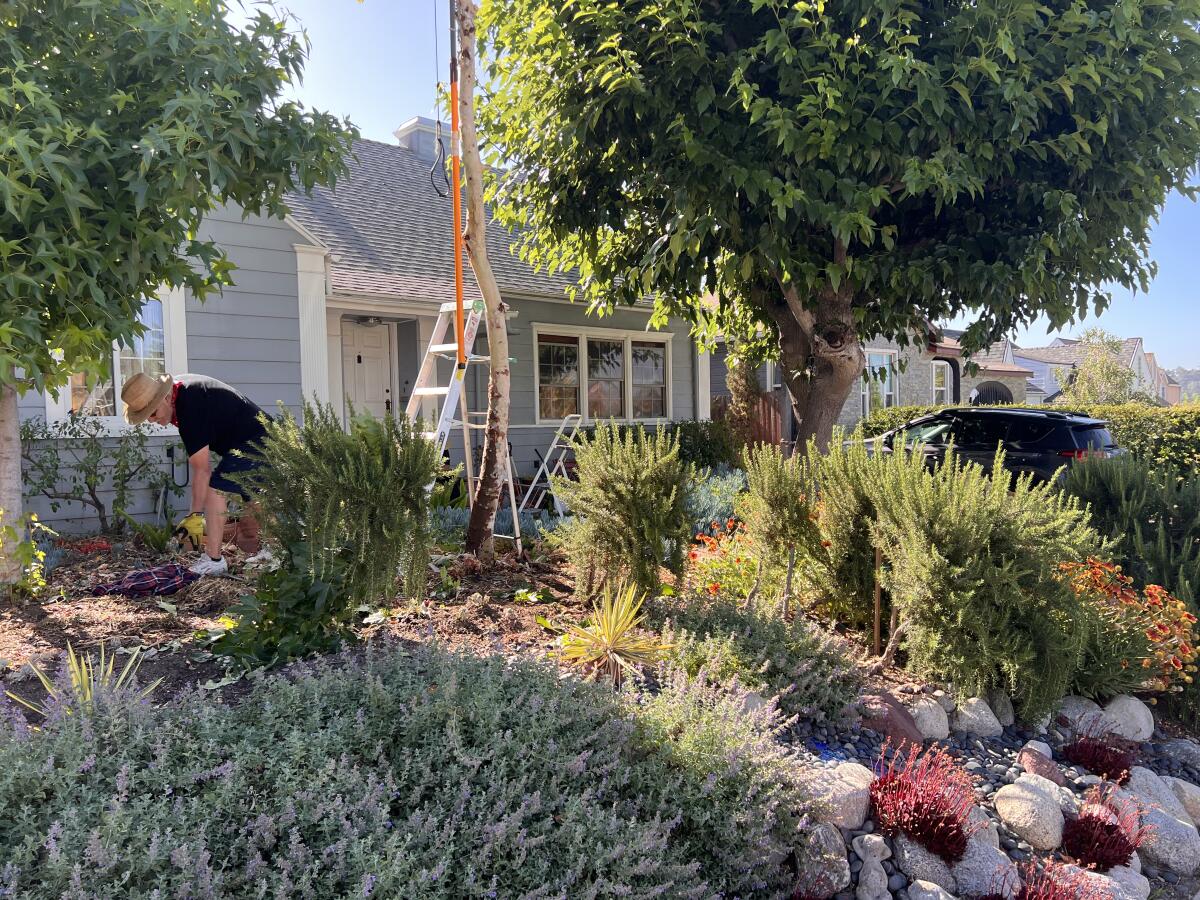
“What horticulturist designed these rules?” said Alfred Gonzalez, 73, as he tended to his garden in Eagle Rock. “LADWP doesn’t know anything about drought irrigation, horticulture, soil.”
While Gonzalez said most of his plants are drought tolerant and can probably survive on eight minutes of water twice a week — the new per-station limit for typical residential systems with non-conserving sprinklers — he also thought the rules were short-sighted.
“If they really wanted to make a difference, they’d put a moratorium on pools, they’d put a moratorium on almonds, they’d put a moratorium on grapes and they’d put a moratorium on marijuana,” he said. “Then I’ll listen to what they have to say. Then I’ll listen to their bulls—.”
Despite official calls for conservation, California cities and towns increased water use by 19% in March.
Others were similarly defiant.
In Beverlywood, the sprinklers at one house on Hillsboro Avenue were running at full blast, sending water streaming down the sidewalks and into the street, even though Wednesdays are now, technically, non-watering days.
According to the DWP’s new rules, houses with odd-numbered addresses can water Mondays and Fridays, while houses with even-numbered addresses can water Thursdays and Sundays. No watering is allowed between 9 a.m. and 4 p.m. regardless of the watering days.
“We all know what days we’re supposed to water on,” one neighbor said with a chuckle, shortly after shutting off his own sprinklers.
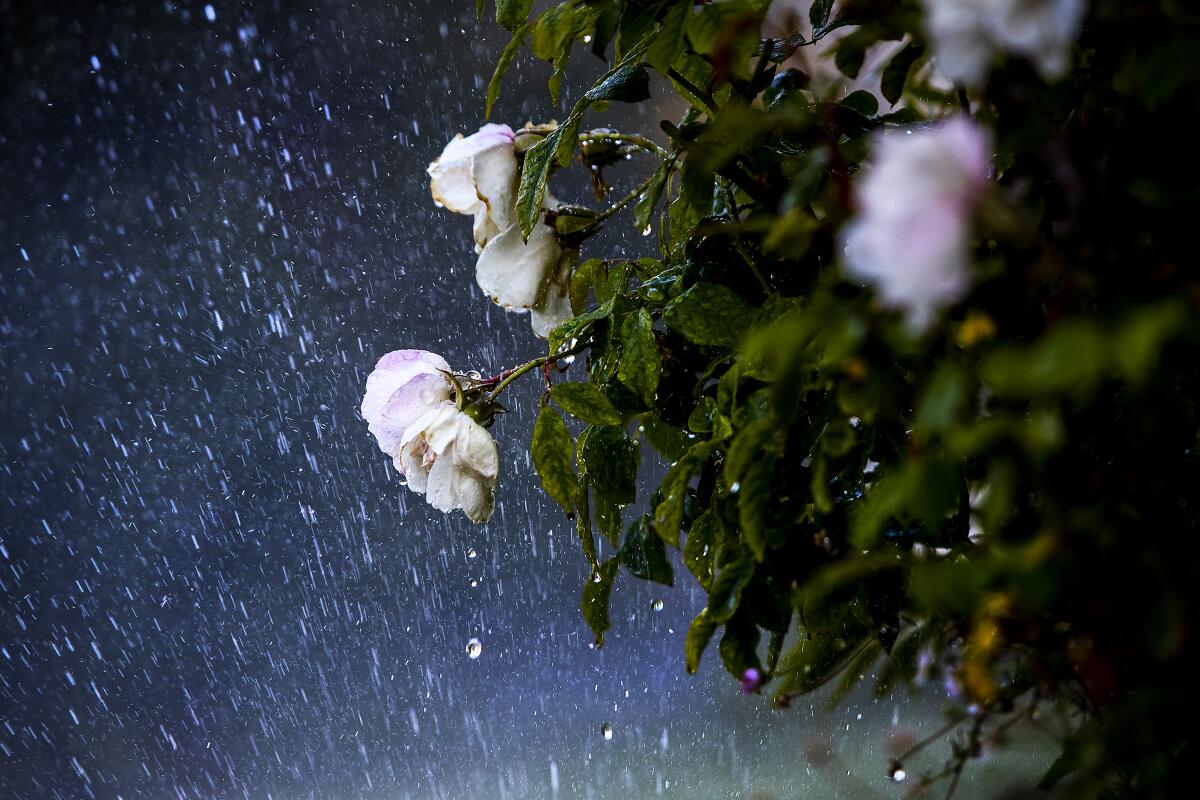
A similar story played out during the previous drought, when residents in some tonier neighborhoods from Calabasas to Beverly Hills were criticized for flouting the rules.
Officials have said that won’t happen this time around, with DWP General Manager Marty Adams telling the L.A. City Council last week that “enforcement will be everywhere, but it will focus on the highest water-using areas.”
Some weren’t convinced. Mirna Prado, a nanny in nearby Cheviot Hills, said she’s heard a lot about the watering restrictions from her husband, who is a gardener for houses in Beverly Hills and Bel Air.
While some clients are OK with the watering restrictions, others have told him to disregard them, she said, adding that since it’s his job, he has to follow what his clients tell him to do.
“Some say they are paying so much for landscaping so they don’t want to [follow the restrictions],” Prado said. “They prefer to pay the fine.”
In the land of multimillion-dollar homes, the question of water conservation plays out differently than in the neighborhoods where the rest of us live.
Yet even against the backdrop of the Westside’s picturesque lawns and flowering gardens, some residents Wednesday said they were aware of the restrictions and took no issue with them.
“I’m prepared to lose plants,” said Betty Ann Marshall, who removed her Cheviot Hills lawn a decade ago and switched to a drip irrigation system soon after.
Her neighbor, Kevin Goff, also killed his lawn three or four years ago, but said he wasn’t aware of the new twice-a-week watering restriction. He didn’t think he could cut his water usage by much more since he’s already been conserving, he said.
“I’ve been in my house for 30 years and I love my garden,” he said. “I’ve already been practicing proper handling of my water, unlike some people.”
Some Angelenos, however, were still finding new ways to save.
In Koreatown, Melvin Mouton said he replaced his lawn with bark chips years ago, but still knows which days he can water at his odd-numbered house.
“I’m very very conscious,” Mouton said. “I have stopped washing down the sidewalk and driveway.”
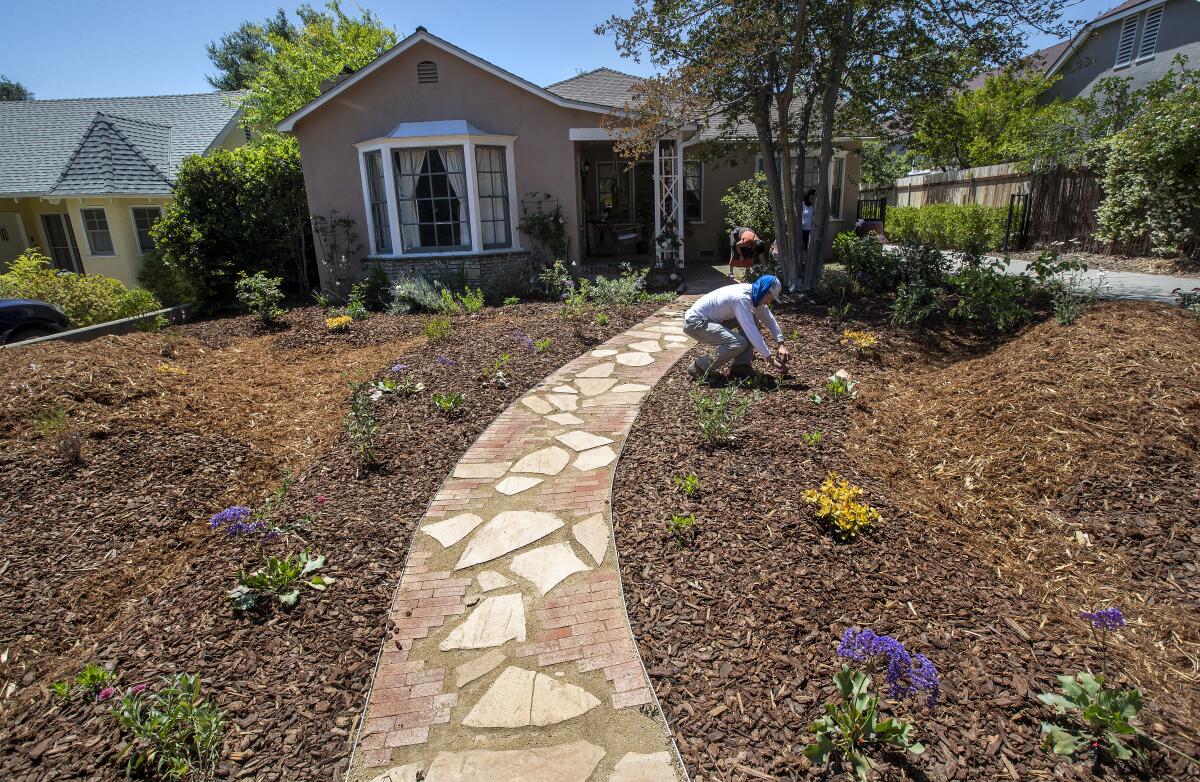
Back in Eagle Rock, longtime resident Dick Mullott said he has similarly accepted that drought — and its associated water restrictions — are a part of life in California. In preparation for the new rules, he gave away dozens of roses from his front garden over the last several weeks.
“They need too much water,” said Mullott, 83.
In addition to roses, Mullott’s front yard is home to tomato plants, sunflowers, grasses and a bushy purple Duranta tree, though he said much of that could soon change. He has already transitioned his backyard to drought-tolerant landscaping and plans to make the front yard more hardy as well.
He also emphasized the importance of conservation inside the house, and said he insists on short showers even for out-of-town guests.
But while Mullott was ready for the new restrictions, he said he was also concerned that DWP’s message wasn’t getting across: He got his first official notice about the change from the agency only yesterday, and he’s still unclear about some of the rules.
On top of that, the bimonthly billing cycle means “we only find out every two months how much water we actually use,” he added.
From Boyle Heights to Bel-Air, it’s going to be a summer of brown grass and hard choices.
Cheviot Hills resident Linda Adatto, 53, was also trying to parse the finer points of the plan.
Adatto said the new rules should be “enough to keep most landscaping alive,” but was concerned about her recently planted Italian stone pine.

During the previous drought, an estimated 14,000 trees died in L.A. city parks alone due to drought restrictions, and Adatto didn’t want the stone pine to become a casualty of the new restrictions.
Officials this time have emphasized that they don’t want trees to die, and there is an exception for hand watering, which can be done on any day of the week between 4 p.m. and 9 a.m. using hoses with self-closing shut-off nozzles.
Adatto paused as she moved to water the stone pine with a hose.
“Is it 8 a.m. or 9 a.m.?” She double-checked. “I don’t want to break the rules.”
More to Read
Sign up for Essential California
The most important California stories and recommendations in your inbox every morning.
You may occasionally receive promotional content from the Los Angeles Times.
